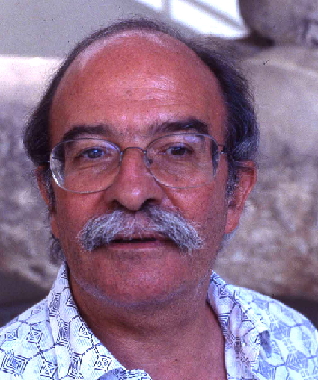Goddard Space Flight Center, Greenbelt, Maryland 20771
Joint ENGINEERING COLLOQUIUM & SCIENTIFIC COLLOQUIUM
Friday, May 28, 2010
John Seiradakis & Tom Malzbender "The Antikythera Mechanism"
ABSTRACT -- In 1900 a party of sponge divers chanced upon the wreck of an ancient merchant vessel close to the Antikythera island, between Crete and mainland Greece. The shipwreck, dated between 86 and 67 B.C., was found to contain ancient Greek treasures, among them a mysterious lump of calcified bronze. It dried and split to reveal the earliest know gears. This enigmatic object, now known as the Antikythera Mechanism, provides extraordinary evidence of high tech in ancient times, making it necessary to rewrite the history of early technology.
Two imaging methods were used to reveal the Antikythera Mechanism’s secrets. Reflectance Imaging, coming from the field of computer graphics, was used to see surface shape detail. Microfocus Computed Tomography was used to probe the interiors of the fragments. The combined methods allowed the reading of over 2000 new characters on the mechanism, besides the 800 already known. Professor John Seiradakis and Tom Malzbender will cover both the functioning of the mechanism and the imaging techniques.

John Seiradakis is a radioastronomer and professor in the Department of Physics in the Aristotle University of Thessaloniki. After taking his first degree in Athens, he earned an MSc and PhD at Victoria University, in Manchester, UK. His main research interests are in Neutron Stars (Pulsar searches – Emission mechanisms – High frequency radio observations – High frequency polarization – Interstellar medium investigations), Flare Stars (UBV Optical Observations – Flare monitoring – Studies of atmospheric activity of Flare Stars and RS CVn stars) and The Centre of our Galaxy (High frequency radio maps – Polarization – Modeling of radio observations). With some 90 publications, he is active in research, teaching, and the promotion of astronomy. His publications include 44 papers in refereed journals, as well as educational books and conference proceedings. Besides chairing committees at his university and representing Greece on international organizations, he has served as both Secretary and President of the Hellenic Astronomical Society.

Tom Malzbender is a senior research scientist in the Mobile and Media Systems Lab of Hewlett-Packard Laboratories. Tom's work blends computer graphics, computer vision, and signal processing. He has developed the techniques of Reflectance Transformation, Polynomial Texture Mapping (PTM), and Fourier Volume Rendering. His PTM methods are used by the National and Tate Galleries in London, and in the fields of criminal forensics, paleontology, and archeology. Tom also developed the capacitive sensing technology used in HP's consumer graphics tablet. He used his imaging methods to help decipher the Antikythera Mechanism. Tom has published extensively, is on the program committee for several 3D graphics and vision conferences, and is the co-chair of the International Symposium on Visual Computing. .
Engineering Colloquium home page: https://ecolloq.gsfc.nasa.gov